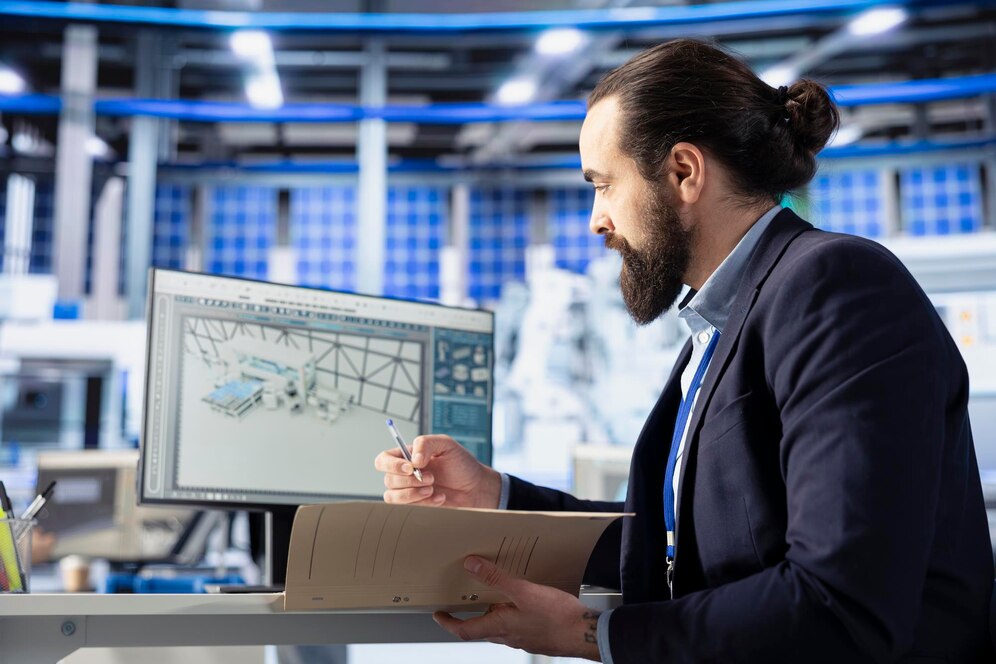Energy facilities play a crucial role in powering our modern world. From sprawling solar farms to massive wind turbines, these infrastructures help meet the ever-growing demand for energy. However, with this growth comes an undeniable impact on the environment. As global attention shifts towards sustainability, finding innovative engineering solutions has become paramount.
The landscape of energy production is changing rapidly, particularly in regions like Central Asia Smart Projects are emerging as beacons of progress. These initiatives not only aim to harness renewable resources more effectively but also focus on minimizing ecological footprints while maximizing efficiency.
As we delve into the importance of engineering solutions within energy facilities, it becomes clear that creativity and technology must come together to forge a path toward a greener future. Let’s explore what makes these advancements so vital for both our planet and our communities.
The need for engineering solutions in energy facilities
Energy facilities are at the heart of our modern infrastructure. They generate power that fuels homes, industries, and economies. However, this essential role comes with significant environmental responsibilities.
As global energy demands rise, traditional methods often fall short in sustainability. Pollution and resource depletion pose urgent challenges. Engineering solutions can help mitigate these issues by optimizing processes and introducing innovative technologies.
Advanced engineering practices focus on efficiency enhancements, waste reduction, and emissions control. From renewable energy integration to smart grid developments, there’s a wealth of options available to improve performance while minimizing ecological footprints.
The transition towards cleaner energy sources is not just an option; it’s a necessity for future generations. Engineers play a pivotal role in ensuring that energy facilities evolve sustainably within this rapidly changing landscape. The right approaches today will shape resilient infrastructures tomorrow.
Types of engineering solutions used in energy facilities
Energy facilities utilize various engineering solutions to enhance efficiency and reduce environmental impact. One prominent approach is the implementation of renewable energy technologies, such as solar panels and wind turbines. These innovations harness natural resources, lessening reliance on fossil fuels.
Another solution involves advanced grid management systems that optimize electricity distribution. Smart grids allow for real-time monitoring and improved responsiveness to demand fluctuations.
Additionally, energy storage systems are crucial in balancing supply and demand. Technologies like batteries store excess energy generated during peak production times for later use.
Moreover, retrofitting existing infrastructure with more efficient materials can significantly decrease waste emissions. Techniques like carbon capture also play a pivotal role in mitigating greenhouse gases produced by traditional power plants.
Each of these solutions contributes uniquely to creating sustainable energy facilities capable of meeting modern demands while safeguarding the environment.
Case studies of successful engineering solutions in energy facilities
One remarkable case study is the Noor Ouarzazate Solar Complex in Morocco. This project showcases how innovative engineering can harness solar energy effectively. The facility combines concentrated solar power with photovoltaic technology, dramatically increasing efficiency while reducing carbon footprints.
Another notable example is the Tata Power Company’s wind farm in Gujarat, India. By implementing advanced turbine technology and optimization techniques, this project has become a leader in renewable energy production. It highlights how smart engineering solutions can adapt to local conditions for maximum output.
In Central Asia, smart projects are emerging as well. Kazakhstan’s transition to renewable sources includes significant investment in modernizing infrastructure and integrating smart grid technologies. These initiatives demonstrate not only environmental benefits but also economic growth potential through job creation and energy security.
Each of these cases illustrates that targeted engineering efforts lead to sustainable advancements within the energy sector.
Challenges and limitations faced by engineers in implementing these solutions
Engineers face numerous challenges when implementing solutions in energy facilities. One major hurdle is the integration of new technologies within existing infrastructure. Upgrading systems can be costly and complex.
Regulatory hurdles also present a significant barrier. Energy policies often lag behind technological advancements, making compliance difficult for engineers striving to innovate. Navigating this landscape requires careful planning and continuous dialogue with policymakers.
Additionally, financial constraints limit project scope. Securing funding for cutting-edge projects is not always straightforward, especially when immediate returns are uncertain.
Another challenge lies in environmental considerations. Engineers must balance operational efficiency with ecological impact, which can complicate design choices.
Workforce skill gaps pose a risk to implementation success. As technology evolves rapidly, training personnel becomes essential but challenging to execute effectively across all levels of an organization. This multifaceted set of obstacles demands creative problem-solving from today’s engineering professionals.
Future advancements and innovations in engineering solutions for energy facilities
The future of engineering solutions for energy facilities is brimming with potential. Innovations are emerging that can transform how we harness and use energy.
Smart grids, powered by artificial intelligence, will optimize energy distribution. These systems will not only improve efficiency but also enhance resilience against outages.
Renewable energy technologies continue to evolve. Advances in solar panel design and wind turbine efficiency promise greater output from natural resources.
Energy storage solutions are also making strides. Battery technology is advancing rapidly, enabling longer-lasting storage capabilities that support renewable integration into the grid.
Furthermore, sustainable materials are gaining traction in construction practices for these facilities. This shift reduces environmental impact while enhancing durability and safety.
Automation and robotics will play a significant role in maintenance and operations, offering precision and reducing human error significantly as projects like Central Asia Smart Projects unfold across the region.
Conclusion: The importance of sustainable and efficient energy facilities for a better future
The role of sustainable and efficient energy facilities cannot be overstated. These facilities are not just critical for meeting our growing energy demands; they also play a pivotal role in preserving our environment. As we face the challenges posed by climate change, the push for clean energy sources becomes more urgent.
Engineering solutions have shown us that it is possible to harness renewable resources while minimizing detrimental impacts on ecosystems. This balance is essential for fostering long-term sustainability in Central Asia and beyond.
With advancements in technology, engineers are continuously innovating methods to enhance efficiency and reduce emissions at energy facilities. The successes seen through various case studies serve as powerful evidence of what can be achieved with smart engineering approaches.
Embracing these innovations will pave the way toward a future where energy production does not come at the cost of environmental degradation or human health. Investing in such projects today sets a foundation for generations to come, ensuring access to cleaner energy and a more sustainable planet.
As we look ahead, it’s clear that embracing engineering solutions in our energy infrastructure is imperative. Our commitment now will define the world we leave behind tomorrow—one where both humanity and nature can thrive together harmoniously.

